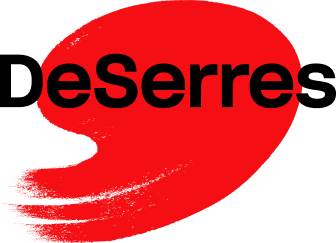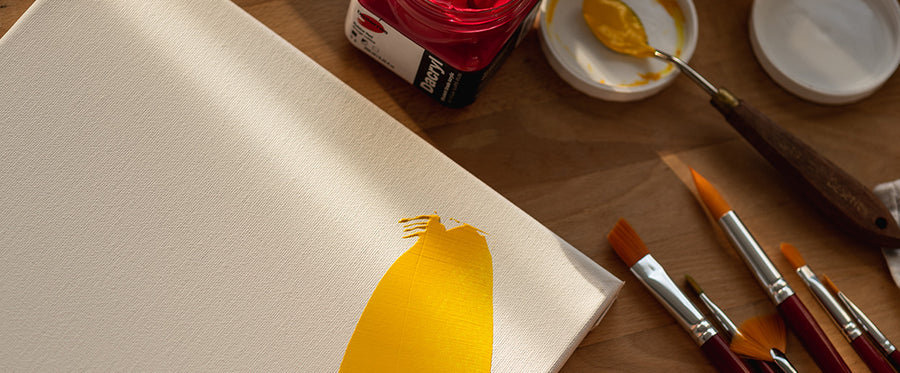From preparing your canvas to adding final touches, learn how to integrate a printed image, add texture and play with colour by following acrylic and mixed media expert Marie-Josée Bergeron's step-by-step instructions.

MATERIALS:
- Canvas
- Spatula
- Painting knife
- Paintbrushes
- Liquitex Gel Medium
- Liquitex Matte Gel Medium
- Liquitex Modeling Paste
- Liquitex Light Modeling Paste
- Molotow Black Marker (1.5 mm)
- Spray bottle
- DACRYL Low Viscosity Acrylic
- DACRYL Professional Liquid Acrylic
- DACRYL Acrylic Gouache
- DACRYL Professional Pouring Medium
INSTRUCTIONS:
Preparing the canvas background:
1. Print the graffiti image. Trim to remove any white borders around the image.
2. Apply a thin layer of matte gel to the back of the image.
3. Position the image on the top left of the canvas. Using a straight spatula, rub the image from the centre outward to smooth out any air bubbles. Be sure to rub well so as not to create unwanted excess on the image. Let dry completely.
4. Apply a light coat of matte gel to the image to create some volume. Let dry.

Adding texture:
1. Using a spatula or spoon, place a generous amount of modelling paste on a clean plate.
2. Add a colour of your choice to the modelling paste: I use DACRYL liquid paint. Mix until smooth.
3. Apply the modelling paste to the canvas and extend the image's shapes and lines. Have fun recreating the graffiti shapes with different textures. Let dry completely.

Colour play:
1. Add a few drops of DACRYL liquid paint directly onto the texture and add a little water using a spray bottle. With a straight brush, spread the paint so that it penetrates the cavities created by the textures. You may wish to move the canvas at this point.
2. Using gouache, play with colours to extend the shapes in the image. This will help to integrate the image into the textures. Let dry completely.
3. Using a fine tip brush, begin to extend the lines of the graffiti image. This step helps to integrate the shapes into the image. You can paint over the image. Use the colours in the image.
4. Add contrasting colours to the bottom of the canvas and gently rub the paint in so that it penetrates the texture cavities. I like to use my fingers for this step. You can gently blot the excess paint with brown paper. Do not rub with the paper. This also helps to create a light texture.
5. In a spray bottle, add a few drops of DACRYL liquid paint (colour of your choice) to water. Spray lightly in some areas so that a few coloured drops remain on the surface. Do not over spray.

Final touches:
1. Add finishing touches to enhance and extend the lines and shapes of your textures and image.
2. If you wish to add fine lines to add volume to the graffiti shapes, or just extend the image's lines, use Molotow's black marker (1.5 mm). Make sure the surface is completely dry before using the marker.
3. Fill a dropper with the pouring medium and add a few drops of DACRYL liquid black paint. Trace some of the lines with the applicator to highlight them.
4. If you want to highlight some of your textured shapes, as well as some of your colours, you can apply a layer of pouring medium as a varnish. Be sure to varnish your canvas beforehand.












